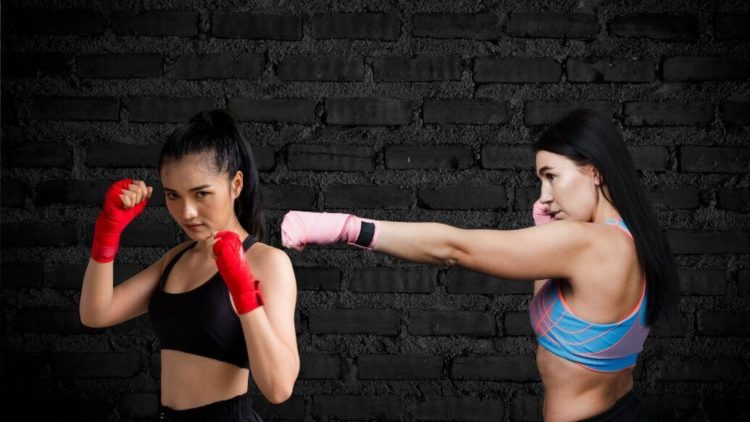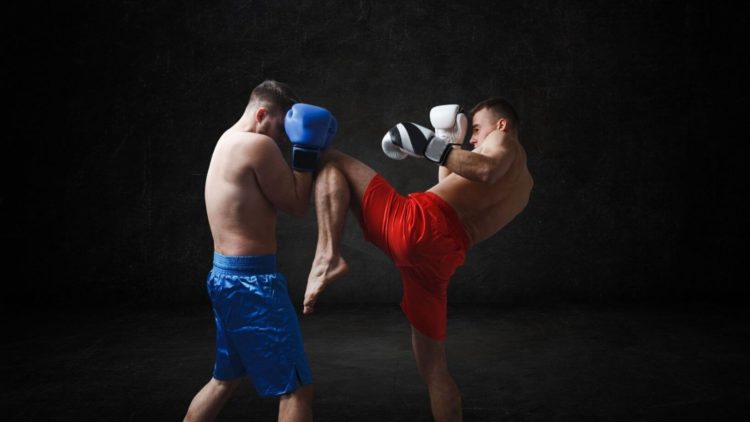
OBJECTIVE OF MUAY THAI: Defeat the opponent by knockout, technical knockout, or the accumulation of points.
NUMBER OF PLAYERS: 2+ players
MATERIALS: Gloves, mouthguard, groin protection
TYPE OF GAME: Sport
AUDIENCE: 5+
OVERVIEW OF MUAY THAI
Muay Thai, also known as “the art of eight limbs”, is a martial art born in Thailand. This combat sport has deep cultural roots, often considered a lifestyle rather than just a hobby or sport. Despite its name translating to “Thai boxing”, the focus of Muay Thai is to physically overwhelm the opponent by any means necessary, such as with kicks, punches, elbows, knees, and takedowns.
Muay Thai’s can be traced back to the Kingdom of Siam, particularly the Ayutthaya Kingdom, in the early 1500s. During this time, this combat sport was practiced for warfare purposes; however, the martial art quickly became a spectacle of entertainment at local festivals and celebrations. With King Chulalongkorn’s ascension to the throne in 1868, a golden era of Muay Thai history was born, mostly due to the King’s keen interest in the sport. THe sport was also known as Muay Boran at the time.
As terrible as the World Wars were, one positive came out of them: countries connected and worked with other countries halfway across the world. This intermingling of allied soldiers led to shared cultural traditions, especially in forms of entertainment. This is precisely how Muay Thai made its way into Western cultures. World War I saw expeditionary forces from Siam become stationed on the Western Front in France, where French and Siamese soldiers participated in friendly Muay Thai competitions. Most of the professional Muay Thai Promotions use the
MUAY THAI CULTURE

As a sport, Muay Thai is often viewed simply as a violent display of combat. However, Muay Thai is considered an art in Thailand – further, it is a lifestyle and an integral part of many young aspiring lives.
In Thailand, children begin Muay Thai training and honing their mixed martial arts skills as young as 5 years old. At this age, they’re mostly just exposed to the training atmosphere of Muay Thai gyms, although they slowly begin learning to throw technical punches and land solid kicks as they grow. By the time they’re 15 years old, these children can make their debuts on the professional stage, possibly kickstarting their future careers.
Apart from a love for the sport, Muay Thai is heavily based on religion, honor, and discipline. A child who wakes up early and dedicates themself to intense physical training at the hands of a wise mentor is arguably already set up for success based upon the values that practice instills. In addition, during fights, Muay Thai practitioners often partake in religious ceremonies and wear ceremonial headbands and armbands. All these factors help instill priceless values and virtues into young men, starting at a very young age.
It’s worth noting that although Muay Thai is traditionally a male sport, in recent years, women have been allowed to compete. However, there are still some hurdles for women wanting to take up this sport professionally. Notably, Rajadamnern Stadium and Lumpinee Stadium do not allow female fights due to superstitions. In fact, women are not even allowed to enter the ring or touch the ropes at all.
SETUP
EQUIPMENT
- Gloves: Muay Thai gloves are nearly identical to traditional boxing gloves and are made of the same material, real or synthetic leather. Glove sizes are dependent on the weight class of the fighter.
- Mouthguard: Mouthguards of any kind are encouraged to protect a person’s teeth from being knocked out from head punches and kicks.
- Groin protection: With kicks and knees common in Muay Thai, extra protection is often needed for male competitors.
THE RING
Muay Thai fights take place in square “rings” surrounded by ropes. These rings measure roughly 25 feet in length and width and sit about 4 feet off the ground. The flooring of the ring is a heavily padded cotton canvas.
WEIGHT CLASSES
As with most combat sports, fighters are separated into different weight classes to ensure fair and equal fights. The exact denominations of weight classes differ from organization to organization, but the following are the traditional ones used in elite Muay Thai competitions in Thailand:
- Mini Flyweight: 100–105 pounds
- Junior Flyweight: 105–108 pounds
- Flyweight: 108–112 pounds
- Junior Bantamweight: 112–115 pounds
- Bantamweight: 115–118 pounds
- Junior Featherweight: 118–122 pounds
- Featherweight: 122–126 pounds
- Junior Lightweight: 126–130 pounds
- Lightweight: 130–135 pounds
- Junior Welterweight: 135–140 pounds
- Welterweight: 140–147 pounds
- Junior Middleweight: 147–156 pounds
- Middleweight: 156–160 pounds
- Junior Heavyweight: 160–175 pounds
- Heavyweight: 175+ pounds
GAMEPLAY

THE FIGHT
A typical Muay Thai fight consists of 5 total rounds lasting 3 minutes each. After each round, a 2-minute break ensues.
Occasionally, heavily televised matches will only contain 3 rounds, with each round and the ensuing inter-round breaks lasting the same length of time as a traditional match.
SCORING
A Muay Thai fight is won in one of three ways:
- Knockout
A win-by-knockout occurs when a fighter is knocked to the ground and is unable to get up before the referee completes a 10-count.
- Technical Knockout
A technical knockout (TKO) occurs at the referee’s discretion when a fighter is clearly unable to continue due to safety reasons.
- Points
A panel of three judges award fights points at the end of each round, depending on each athlete’s performance. The winning fighter is always awarded 10 points, while the loser receives 7, 8, or 9 points depending on the manner in which they lose. Rounds considered to be a draw are scored 10 points for each fighter.
RULES
Since Muay Thai rules allows fighters to use their entire body in fights, there are only a few rules regarding what is legal and what is not. Headbutting, biting, and targeting someone’s eyes or groin are extremely frowned upon and will almost always result in warnings, point deductions, or even disqualification if extreme enough. In addition to these clear fouls, the following are not allowed in Muay Thai bouts:
- Muay Thai Fighters cannot purposefully use the outer ropes to benefit them in any manner.
- Only strikes are allowed; fighters cannot use wrestling or judo moves to grapple with their opponent.
- Thai boxers can cling together as long as at least one of them is actively trying to strike their opponent.
END OF GAME
The Muay Thai fighter who scores a knockout, technical knockout, or the most points by the end of 5 (or 3) rounds is hailed the victor of the Muay Thai match.
- 30 GAMES TO PLAY OVER TEXT - April 22, 2024
- 20+ FREE PRINTABLE BABY SHOWER GAMES - April 16, 2024
- 20+ College Party Games for the Best Night Ever! - April 2, 2024